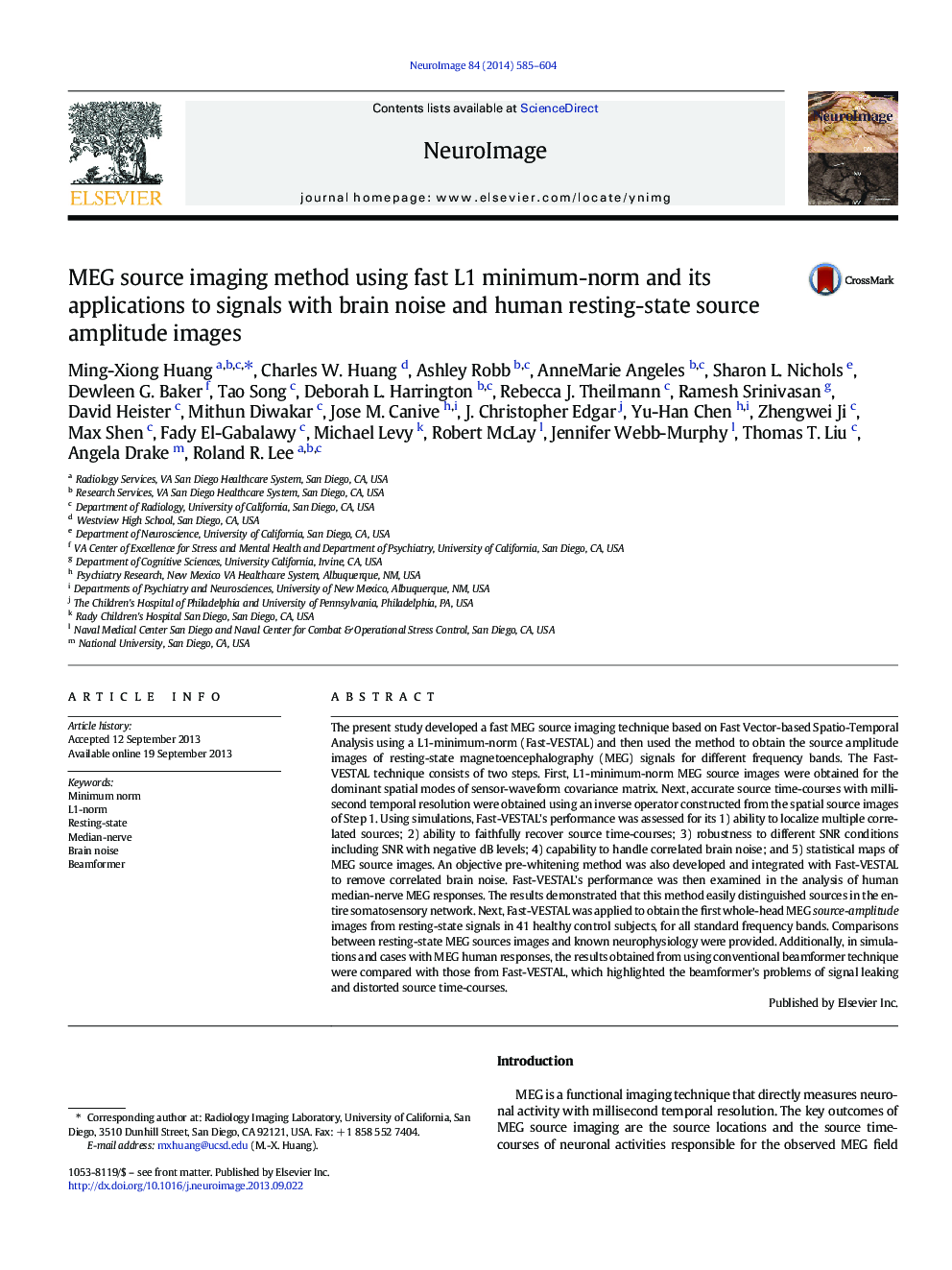| Article ID | Journal | Published Year | Pages | File Type |
|---|---|---|---|---|
| 6028544 | NeuroImage | 2014 | 20 Pages |
â¢A new MEG imaging method for obtaining accurate source locations and time-coursesâ¢This new MEG imaging method, Fast-VESTAL, is highly robust to white and brain noise.â¢We develop a new objective pre-whitening method to remove correlated brain noiseâ¢We examine the performance of Fast-VESTAL using median-nerve responses.â¢We obtain the first source amplitude image for all frequency bands in resting-state.
The present study developed a fast MEG source imaging technique based on Fast Vector-based Spatio-Temporal Analysis using a L1-minimum-norm (Fast-VESTAL) and then used the method to obtain the source amplitude images of resting-state magnetoencephalography (MEG) signals for different frequency bands. The Fast-VESTAL technique consists of two steps. First, L1-minimum-norm MEG source images were obtained for the dominant spatial modes of sensor-waveform covariance matrix. Next, accurate source time-courses with millisecond temporal resolution were obtained using an inverse operator constructed from the spatial source images of Step 1. Using simulations, Fast-VESTAL's performance was assessed for its 1) ability to localize multiple correlated sources; 2) ability to faithfully recover source time-courses; 3) robustness to different SNR conditions including SNR with negative dB levels; 4) capability to handle correlated brain noise; and 5) statistical maps of MEG source images. An objective pre-whitening method was also developed and integrated with Fast-VESTAL to remove correlated brain noise. Fast-VESTAL's performance was then examined in the analysis of human median-nerve MEG responses. The results demonstrated that this method easily distinguished sources in the entire somatosensory network. Next, Fast-VESTAL was applied to obtain the first whole-head MEG source-amplitude images from resting-state signals in 41 healthy control subjects, for all standard frequency bands. Comparisons between resting-state MEG sources images and known neurophysiology were provided. Additionally, in simulations and cases with MEG human responses, the results obtained from using conventional beamformer technique were compared with those from Fast-VESTAL, which highlighted the beamformer's problems of signal leaking and distorted source time-courses.
